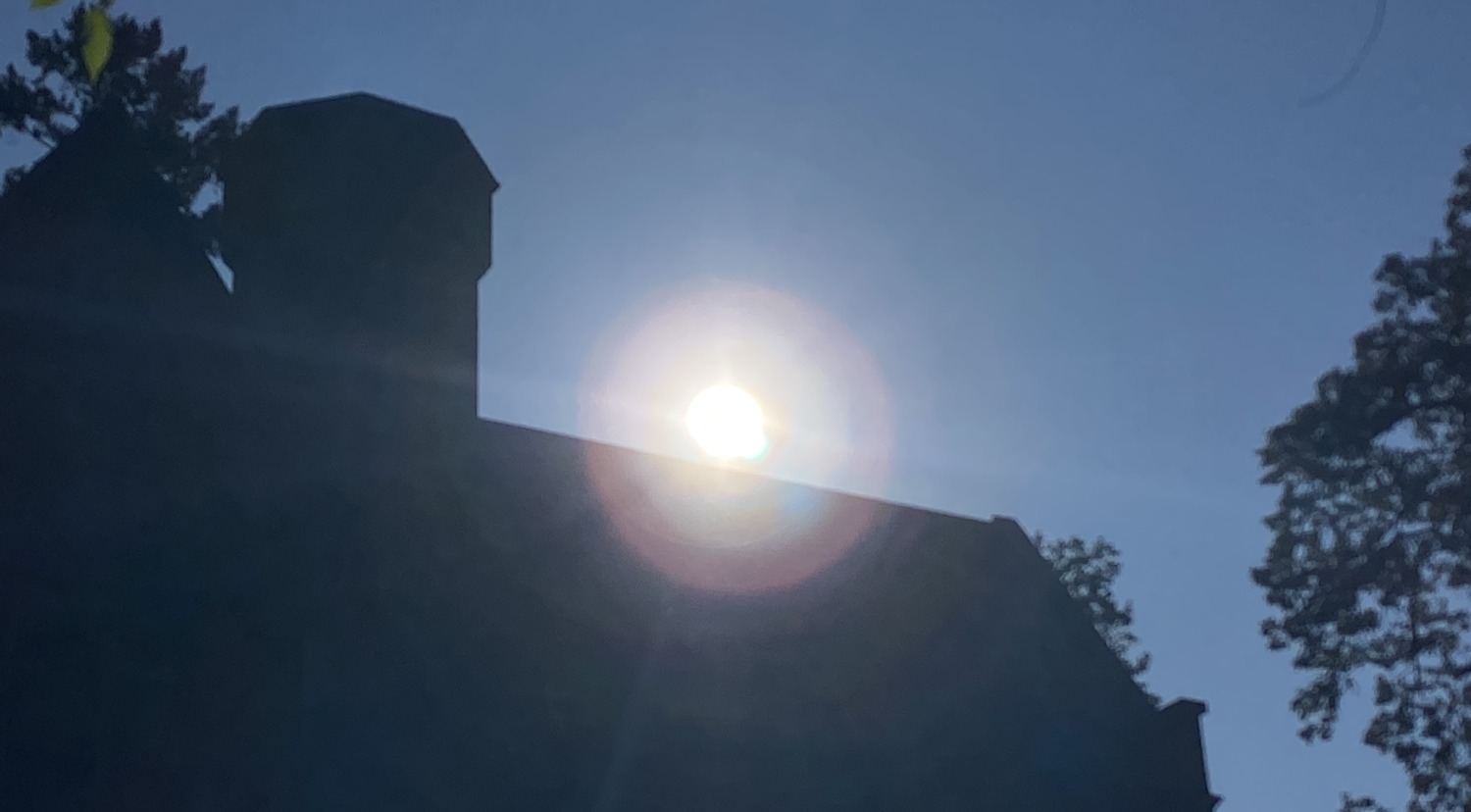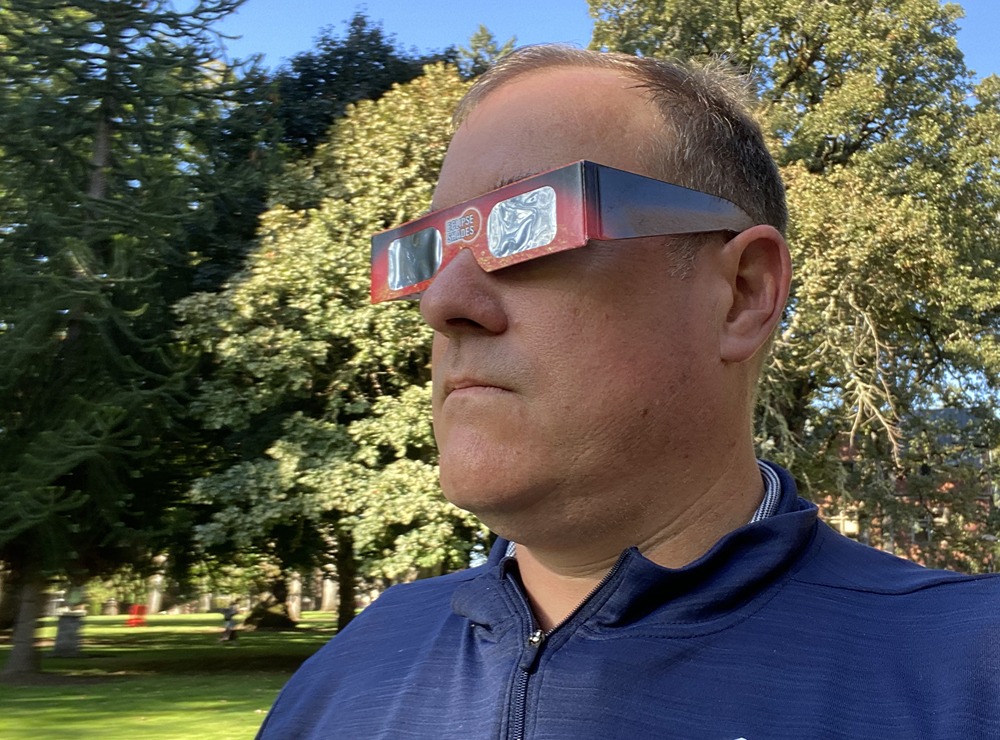Eclipses To Bring Skywatchers Out In October, April
 FOREST GROVE, Ore. — Eclipse mania is streaking across the United States again.
FOREST GROVE, Ore. — Eclipse mania is streaking across the United States again.
Six years after a total eclipse shined new light (or dark, as the case would be) on planetary science, two more solar events over the next six months will send skywatchers flocking to see the moon align just right to block the light from the sun.
On Oct. 14, an annular solar eclipse will cut a path across the western U.S. from Oregon down to Texas. Then, on April 8, a total solar eclipse will darken skies across Mexico before taking a path from Texas north to New England.
In October’s annular eclipse, the moon will appear to cover roughly 90% of the surface of the sun. The alignment makes it appear that the sun is creating a “ring of fire” around the moon for those in the path of annularity.
April’s total solar eclipse will be the first over the U.S. since the “Great American Eclipse” of 2017 and the last one that will be visible in the contiguous U.S. until 2044.
“In terms of an experience, aside from the science aspect of it, the most powerful part of an eclipse is that it transports you into that awareness of what is going on out there,” said Todd Duncan, an assistant professor of physics at Pacific University who holds a PhD in astronomy and astrophysics.
A solar eclipse occurs when the moon moves in front of the sun in such a way that it blocks light from the sun. The amount of light blocked depends on several factors, including the distance of the Earth from both the sun and the moon.
Duncan likens the effect to holding a basketball away from your body with one hand and holding a golf ball close to your eye with the other hand. “At the right distances from your line of sight, you can block out the entire basketball with the little golf ball,” Duncan said. “If you move the golf ball a little further away from your eye while leaving the basketball in the same place, you will expose a little bit more of the outer part of the basketball. It’s just a question of where we happen to be in the shadow that’s created.”
In reality, eclipses are not that unusual, even here on Earth. A total of 29 solar and lunar eclipses will be visible on Earth between now and the end of 2029. Two solar eclipses and two lunar eclipses were experienced in 2023 and there will be five in 2024. Including the spring 2024 event, there are three total solar eclipses that will occur between now and 2030.
What makes an eclipse unusual is when the path of the eclipse crosses over population centers. October’s annular eclipse is just the second this decade where the path of annularity crosses the U.S. Next spring’s total eclipse is the only one this decade that will be visible in the U.S.
Duncan points out that there is always an eclipse going on somewhere across the universe. “What makes it a big deal is when that shadow happens to fall on the Earth,” he said. “That is when you say you are seeing an eclipse.”
BLINDED BY THE LIGHT
 An eclipse is an exciting natural phenomenon to experience but only when viewed safely says Karl Citek, a professor at the Pacific University College of Optometry and a Diplomate of the American Academy of Optometry.
An eclipse is an exciting natural phenomenon to experience but only when viewed safely says Karl Citek, a professor at the Pacific University College of Optometry and a Diplomate of the American Academy of Optometry.
“Anytime you look at the sun, the light is going to be very bright,” Citek said. “There is so much energy there that it can damage the eyes irreparably.”
Because of the amount of light exerted during any moment of the day, even a moment of looking directly at the sun without eye protection can cause damage. That damage can be temporary but it also be serious and permanent.
The easiest way to protect your eyes while viewing an eclipse is by purchasing special glasses designed for the occasion. Available for as little as $1 per pair through online retailers, the cardboard-framed glasses look like a cheap pair of sunglasses and have a filter dark enough to provide adequate protection for looking at the sun.
Eclipse glasses should meet the international ISO 12312-2 standard, certifying that the product is safe for eclipse viewing. Welderʻs goggles with No. 14 glass are also safe enough for eclipse viewing.
Regular sunglasses, Citek says, are not dark enough to protect the eyes. “Even if you wear two or three pairs, one on top of the other, sunglasses aren’t dark enough. They are not going to work the same.”
Citek also cautions that if you bought eclipse glasses to view the 2017 total solar eclipse, they will not work now. The filters break down over time, reducing the ability to protect the eyes.
“Those are going to be nice mementos but put them in your curio case,” Citek said. “(Eclipse glasses and filters) have a useful life of about three years. Anything older than that is not going to be useful anymore.”
For viewing an eclipse through a camera or telescope, Citek recommends using a filter that fits over the front of the lens on the instrument. While sunlight is unlikely to damage the equipment, viewing the intense light through either without the proper protection can cause the same type of eye damage without protection. Wearing eclipse glasses and trying to view an eclipse with a camera or through optics will only cause frustration.
“(The glasses) will be too dark. You’re not going to be able to see through the camera,” Citek said. “You have to place the filter at the front lens, you can’t put it at the eyepiece. With the filters, you can safely view the camera while looking at the eclipse and get a picture of it.”
FREEZEFRAME: BUILDING A PINHOLE CAMERA
While eclipse glasses are inexpensive, a pinhole camera provides and safe and fun way to view an eclipse using materials most of us can find around the house.
An effective pinhole camera can be made in five minutes. All it takes is a small box, a piece of paper, a piece of aluminum foil and the ability to cut a couple of holes in the box.
“You essentially cut a hole in the end of the box with the aluminum foil. You use the box as a shade and put a piece of paper on the other end to project onto,” said Duncan.
Both Duncan and Citek agree that a pinhole camera is one of the safest ways to view an eclipse because it provides an indirect way to view the sun. You are not looking directly at it.
If you do not have a small box, Duncan says that it may not be necessary. While the box helps shade the sun for better viewing, the image of the sun can be projected through a pinhole in the same way that a film projector enlarges the film of a movie for viewing.
“If you have something with a pinhole and a piece of cardboard, or just something to cast a shadow, then you are projecting the image of a sun onto a screen,” Duncan said. “It is just like watching a movie and it is totally safe to look at.”
Pacific University is the only comprehensive university in Washington County, Oregon, serving more than 3,600 undergraduate, graduate and professional students in the arts and sciences, business, education, health professions and optometry.
Want to build your own pinhole camera? Download Easy To Follow Instructions.
ADDITIONAL RESOURCES
NASA Website: October 2023 Annular Eclipse
NASA Website: April 2024 Total Solar Eclipse
Solar Eclipses & Eye Safety - American Optometric Association


